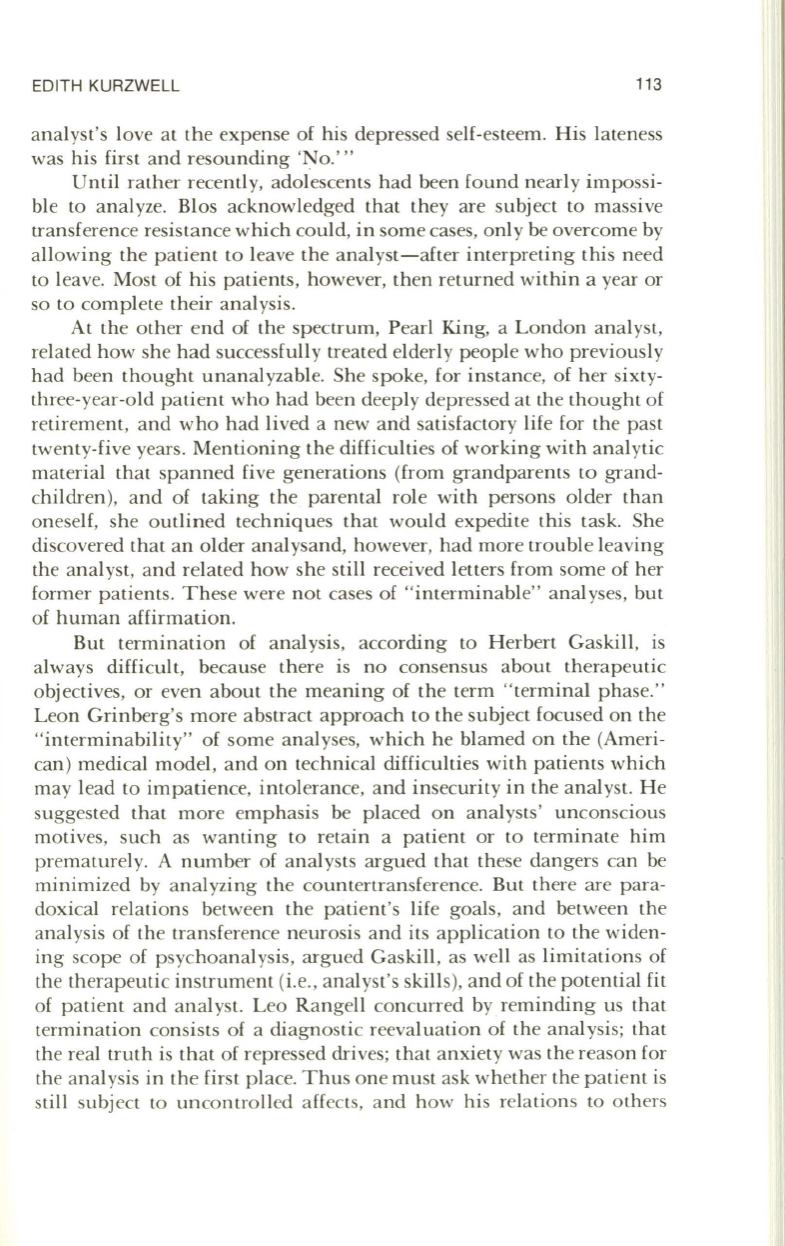
EDITH KURZWELL
113
analyst's love at the expense of his depressed self-esteem. His lateness
was his first and resounding 'No.'''
Until rather recently, adolescents had been found nearly impossi–
ble to analyze. BIos acknowledged that they are subject to massive
transference resistance which could, in some cases, only be overcome by
allowing the patient to leave the analyst-after interpreting this need
to leave. Most of his patients, however, then returned within a year or
so to complete their analysis.
At the other end of the spectrum, Pearl King, a London analyst,
related how she had successfully treated elderly people who previously
had been thought unanalyzable. She spoke, for instance, of her sixty–
three-year-old patient who had been deeply depressed at the thought of
retirement, and who had lived a new and satisfactory life for the past
twenty-five years. Mentioning the difficulties of working with analytic
material that spanned five generations (from grandparents to grand–
children), and of taking the parental role with persons older than
oneself, she outlined techniques that would expedite this task. She
discovered that an older analysand, however, had more trouble leaving
the analyst, and related how she still received letters from some of her
former patients. These were not cases of "interminable" anal yses, but
of human affirmation.
But termination of analysis, according to Herbert Gaskill, is
always difficult, because there is no consensus about therapeutic
objectives, or even about the meaning of the term "terminal phase."
Leon Grinberg's more abstract approach to the subject focused on the
"interminability" of some analyses, which he blamed on the (Ameri–
can) medical model, and on technical difficulties with patients which
may lead to impatience, intolerance, and insecurity in the analyst. He
suggested that more emphasis be placed on analysts' unconscious
motives, such as wanting to retain a patient or to terminate him
prematurely. A number of analysts argued that these dangers can be
minimized by analyzing the countertransference. But there are para–
doxical relations between the patient's life goals, and between the
analysis of the transference neurosis and its application to the widen–
ing scope of psychoanalysis, argued Gaskill, as well as limitations of
the therapeutic instrument (i.e., analyst's skills), and of the potential fit
of patient and anal yst. Leo Rangell concurred by reminding us that
termination consists of a diagnostic reevaluation of the analysis; that
the real truth is that of repressed drives; that anxiety was the reason for
the analysis in the first place. Thus one must ask whether the patient is
still subject to uncontrolled affects, and how his relations to others


